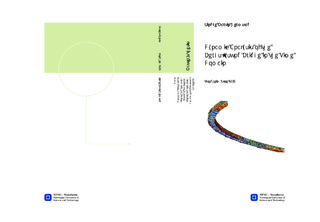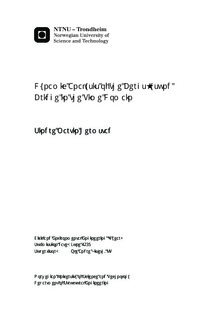| dc.contributor.advisor | Oiseth, Ole Andre | nb_NO |
| dc.contributor.author | Hermstad, Sindre Martin | nb_NO |
| dc.date.accessioned | 2014-12-19T12:02:41Z | |
| dc.date.available | 2014-12-19T12:02:41Z | |
| dc.date.created | 2013-09-19 | nb_NO |
| dc.date.issued | 2013 | nb_NO |
| dc.identifier | 649764 | nb_NO |
| dc.identifier | ntnudaim:9771 | nb_NO |
| dc.identifier.uri | http://hdl.handle.net/11250/237296 | |
| dc.description.abstract | The work has contributed to the assessment of the implementation of hydrodynamic effects in a nonlinear time domain analysis. Critical mechanisms like ?snap through? can only emerge in analyses that consider geometric nonlinearities or the actual structure after completion, and are therefore essential for the development of new floating bridge concepts that ultimately can carry traffic over the Sognefjord. This master thesis considers the dynamic response in the time domain on the Bergsøysund Bridge, a 900 meters long pontoon bridge where the hydrodynamic wave action is the external force contributor, and where geometric nonlinearities and frequency dependent hydrodynamics can be studied. The finite element model was firstly constructed in the Abaqus software interface as a part of my project assignment in my ninth semester, and is further developed in this thesis. The applied changes to the model are made to reduce computational time without reducing the credibility of the results; creating an effective and manageable model. The waterborne pontoons are modeled and simulated in DNV's software so hydrodynamic effects can be implemented in the comprehensive Abaqus time domain analysis.A broad banded sea state is developed by estimating the spectral densities for a two dimensional space. The statistical waves are developed according to the recommended sea spectra from ITTC (International Towing Tank Conference). By combining a time domain wave pattern with transfer functions developed in Wadam, sea loads are extracted and considered in the Abaqus time series analysis. Hydrodynamic response is also evaluated incrementally in Abaqus by implementing software developed at NTNU. The bridge response in time domain is then evaluated in the auto spectral domain. The results from the analysis in Abaqus suggest that the hydrodynamics caused by dynamic response are included and that the augmented FE-model is an effective and accurate representation of the real bridge. The combination of transfer function and sea spectra is also successfully implemented. Results from linear analyses are compared to Knut Andreas Kvåle's master thesis; Dynamic Analysis of the Bergsøysund Bridge in the Frequency Domain. He has evaluated dynamic response in the frequency domain. The results were corresponding adequately and the use of the two methods together can be further investigated. | nb_NO |
| dc.language | eng | nb_NO |
| dc.publisher | Institutt for konstruksjonsteknikk | nb_NO |
| dc.title | Dynamic Analysis of the Bergsøysund Bridge in the Time Domain | nb_NO |
| dc.type | Master thesis | nb_NO |
| dc.source.pagenumber | 160 | nb_NO |
| dc.contributor.department | Norges teknisk-naturvitenskapelige universitet, Fakultet for ingeniørvitenskap og teknologi, Institutt for konstruksjonsteknikk | nb_NO |

